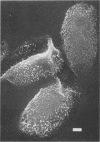Abstract
Conidia of the plant pathogenic fungus Botrytis cinerea adhered to tomato cuticle and to certain other substrata immediately upon hydration. This immediate adhesion occurred with both living and nonliving conidia. Adhesion was not consistently influenced by several lectins, sugars, or salts or by protease treatment, but it was strongly inhibited by ionic or nonionic detergents. With glass and oxidized polyethylene, substrata whose surface hydrophobicities could be conveniently varied, there was a direct relationship between water contact angle and percent adhesion. Immediate adhesion did not involve specific conidial attachment structures, although the surfaces of attached conidia were altered by contact with a substratum. Freshly harvested conidia were very hydrophobic, with more than 97% partitioning into the organic layer when subjected to a phase distribution test. Percent adhesion of germinated conidia was larger than that of nongerminated conidia. Evidence suggests that immediate adhesion of conidia of B. cinerea depends, at least in part, on hydrophobic interactions between the conidia and substratum.
Full text
PDF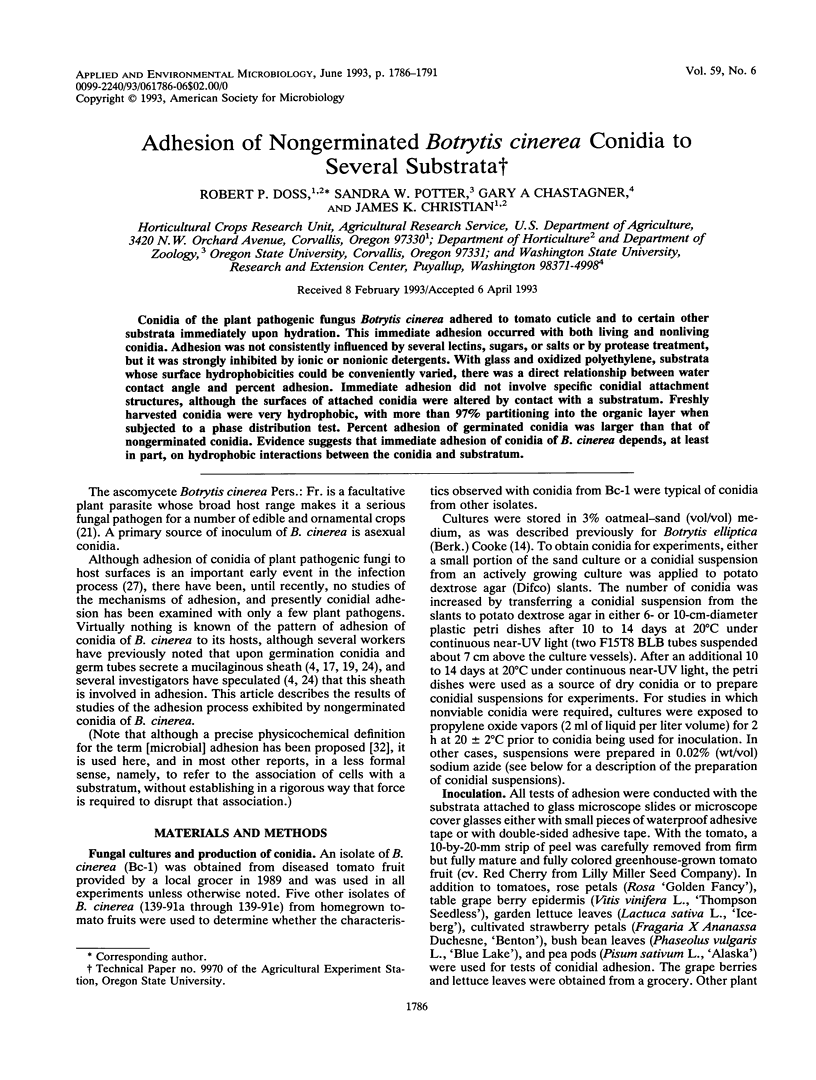

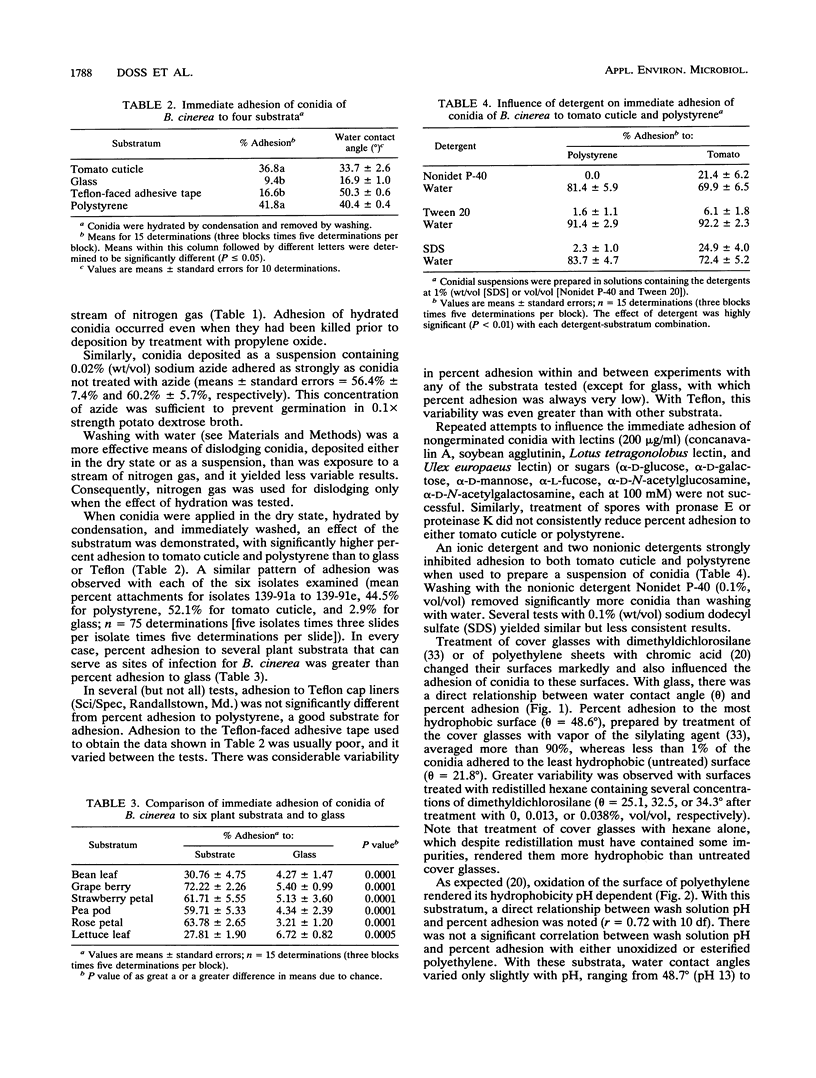
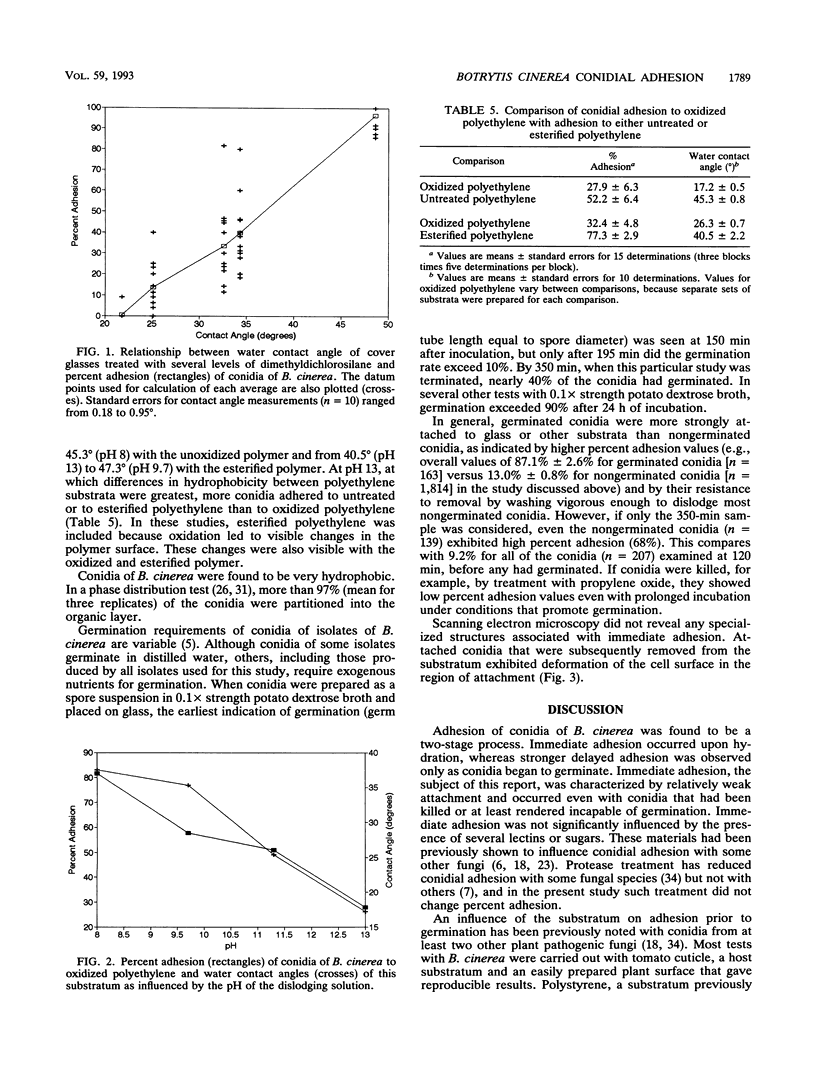

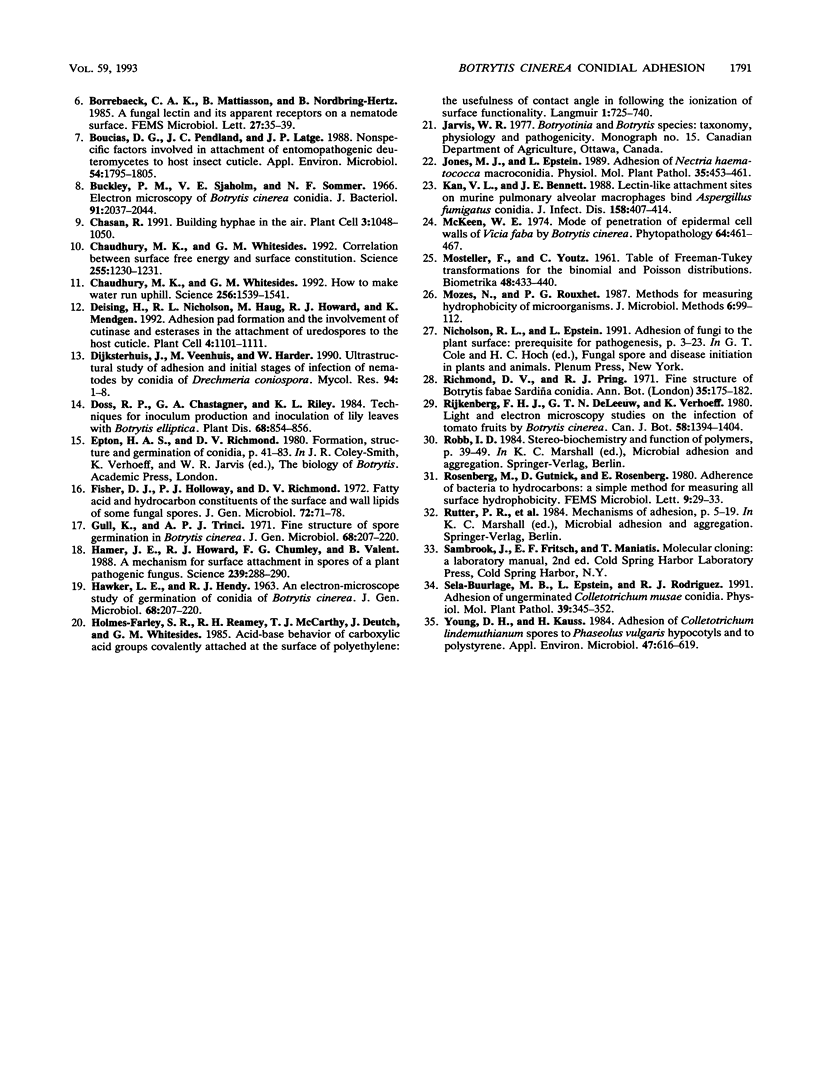
Images in this article
Selected References
These references are in PubMed. This may not be the complete list of references from this article.
- Baier R. E., Shafrin E. G., Zisman W. A. Adhesion: mechanisms that assist or impede it. Science. 1968 Dec 20;162(3860):1360–1368. doi: 10.1126/science.162.3860.1360. [DOI] [PubMed] [Google Scholar]
- Boucias D. G., Pendland J. C., Latge J. P. Nonspecific factors involved in attachment of entomopathogenic deuteromycetes to host insect cuticle. Appl Environ Microbiol. 1988 Jul;54(7):1795–1805. doi: 10.1128/aem.54.7.1795-1805.1988. [DOI] [PMC free article] [PubMed] [Google Scholar]
- Buckley P. M., Sjaholm V. E., Sommer N. F. Electron microscopy of Botrytis cinerea conidia. J Bacteriol. 1966 May;91(5):2037–2044. doi: 10.1128/jb.91.5.2037-2044.1966. [DOI] [PMC free article] [PubMed] [Google Scholar]
- Chasan R. Building Hyphae in the Air. Plant Cell. 1991 Oct;3(10):1048–1050. doi: 10.1105/tpc.3.10.1048. [DOI] [PMC free article] [PubMed] [Google Scholar]
- Chaudhury M. K., Whitesides G. M. Correlation between surface free energy and surface constitution. Science. 1992 Mar 6;255(5049):1230–1232. doi: 10.1126/science.255.5049.1230. [DOI] [PubMed] [Google Scholar]
- Chaudhury M. K., Whitesides G. M. How to make water run uphill. Science. 1992 Jun 12;256(5063):1539–1541. doi: 10.1126/science.256.5063.1539. [DOI] [PubMed] [Google Scholar]
- Deising H., Nicholson R. L., Haug M., Howard R. J., Mendgen K. Adhesion Pad Formation and the Involvement of Cutinase and Esterases in the Attachment of Uredospores to the Host Cuticle. Plant Cell. 1992 Sep;4(9):1101–1111. doi: 10.1105/tpc.4.9.1101. [DOI] [PMC free article] [PubMed] [Google Scholar]
- Hamer J. E., Howard R. J., Chumley F. G., Valent B. A mechanism for surface attachment in spores of a plant pathogenic fungus. Science. 1988 Jan 15;239(4837):288–290. doi: 10.1126/science.239.4837.288. [DOI] [PubMed] [Google Scholar]
- Kan V. L., Bennett J. E. Lectin-like attachment sites on murine pulmonary alveolar macrophages bind Aspergillus fumigatus conidia. J Infect Dis. 1988 Aug;158(2):407–414. doi: 10.1093/infdis/158.2.407. [DOI] [PubMed] [Google Scholar]
- Young D. H., Kauss H. Adhesion of Colletotrichum lindemuthianum Spores to Phaseolus vulgaris Hypocotyls and to Polystyrene. Appl Environ Microbiol. 1984 Apr;47(4):616–619. doi: 10.1128/aem.47.4.616-619.1984. [DOI] [PMC free article] [PubMed] [Google Scholar]



